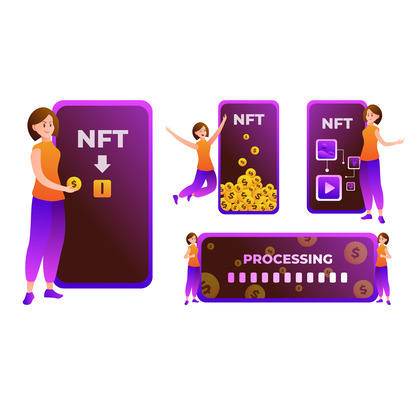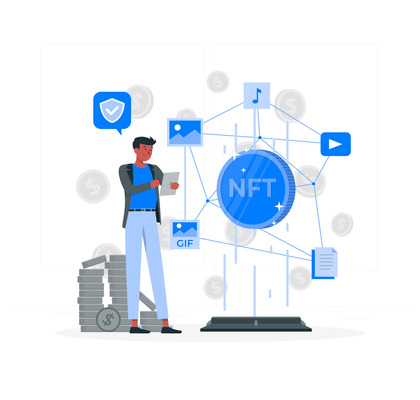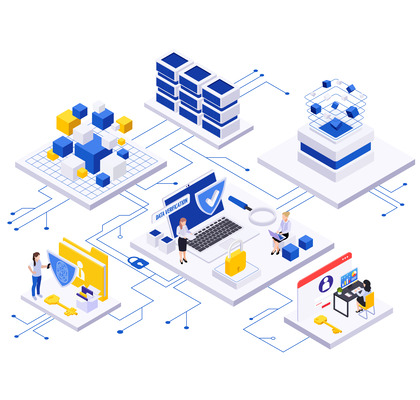Crunching the Numbers: How Data Science Revolutionizes Stock Market Analysis!
Investing in the stock market has always been a blend of art and science. While the art of investing lies in understanding market dynamics and making informed decisions, the science of stock market analysis has been significantly transformed by the emergence of data science. In today’s era of big data and advanced analytics, data science plays a pivotal role in decoding the complexities of the stock market, enabling investors to make more accurate predictions and informed decisions. In this article, we will explore how data science revolutionizes stock market analysis and its wide-ranging implications for investors. Data science, a multidisciplinary field that combines statistical analysis, machine learning, and data visualization, involves extracting insights and knowledge from vast amounts of structured and unstructured data. It utilizes various techniques to identify patterns, trends, and relationships that can aid in decision-making. When applied to stock market analysis, data science empowers investors with a data-driven approach, allowing them to uncover hidden insights and gain a competitive edge in the market. Data science begins with the collection and cleaning of data. In the realm of stock market analysis, this involves gathering historical stock prices, financial statements, news articles, and social media sentiment data. Data scientists employ techniques to clean and pre-process the data, ensuring its quality and reliability for further analysis. One of the key applications of data science in stock market analysis is predictive modelling. By leveraging historical market data and applying advanced machine learning algorithms, data scientists can develop models to forecast stock prices and identify potential trends. These models take into account various factors such as historical price patterns, volume, and market indicators to generate predictions with a certain level of accuracy. Data science enables investors to assess and manage risks effectively. Through the analysis of historical data and the use of statistical techniques, data scientists can quantify risks associated with different investment options. This allows investors to make more informed decisions and adjust their portfolios accordingly. Data science techniques also aid in portfolio optimization, helping investors to construct well-diversified portfolios with an optimal balance of risk and return. By considering historical performance data, correlations between different assets, and risk preferences, data scientists can recommend portfolio allocations that maximize returns while minimizing risks. One of the primary applications of data science in stock market analysis is stock price prediction. By analysing historical price patterns and incorporating relevant market indicators, data scientists can develop models that provide insights into future stock price movements. These predictions assist investors in making timely buy or sell decisions. Sentiment analysis, another powerful application of data science, involves analysing social media posts, news articles, and other textual data to gauge public sentiment towards specific stocks or the overall market. By monitoring sentiment trends, investors can identify market sentiment shifts and adjust their investment strategies accordingly. Data science enables investors to identify and analyse market trends. By analysing historical data and applying statistical techniques, data scientists can detect patterns and trends that may influence stock prices. This information allows investors to ride the wave of market trends and make profitable investment decisions. Data science has also revolutionized high-frequency trading, where investors aim to capitalize on small price fluctuations occurring within seconds or minutes. By leveraging advanced algorithms and real-time data feeds, data scientists can develop automated trading systems that execute trades at lightning speed, thereby gaining a competitive advantage in the market. While data science has brought significant advancements to stock market analysis, it is essential to acknowledge the challenges and limitations associated with its application. The quality and accuracy of data used in data science models are crucial for reliable analysis. In stock market analysis, data scientists face challenges such as missing data, data errors, and data inconsistencies. Ensuring data integrity is a critical task to avoid biased or inaccurate predictions. Overfitting occurs when a model performs exceptionally well on historical data but fails to generalize to new data. Data scientists need to be cautious about overfitting and ensure that their models are robust and capable of handling unseen data. Additionally, models can be biased if they are trained on incomplete or unrepresentative datasets, leading to inaccurate predictions. Data science models, especially those based on deep learning and neural networks, can be highly complex and difficult to interpret. This lack of interpretability poses challenges in explaining the reasoning behind specific predictions, making it hard for investors to trust and act upon the model’s recommendations. The stock market is influenced by various unpredictable factors such as geopolitical events, economic changes, and market sentiment. Despite the advancements in data science, accurately predicting the stock market’s behaviour in such volatile conditions remains a significant challenge.
The stock market is filled with individuals who know the price of everything but the value of nothing
– Philip Fisher Hedge funds have been at the forefront of using data science techniques for stock market analysis. They employ sophisticated algorithms to analyse vast amounts of data and make investment decisions based on quantitative models. These algorithms help hedge funds identify trading opportunities, mitigate risks, and generate substantial returns for their investors. Robo-advisors, digital platforms that provide automated investment advice, have become increasingly popular among individual investors. These platforms utilize data science algorithms to analyse investors’ risk profiles, financial goals, and market trends to offer personalized investment recommendations. Robo-advisors simplify the investment process and make it more accessible to a wider audience. The field of artificial intelligence (AI) and machine learning (ML) continues to evolve rapidly, presenting exciting opportunities for stock market analysis. Advancements in AI and ML algorithms enable more accurate predictions, enhanced risk assessment, and improved portfolio optimization. As these technologies progress, investors can expect even more sophisticated and reliable data-driven insights. Data scientists are exploring alternative data sources beyond traditional financial data to gain a competitive edge in stock market analysis. These sources include satellite imagery, web scraping, social media data, and credit card transaction data. Incorporating such diverse data sets into analysis can provide unique perspectives and generate novel investment opportunities. Data science is not limited to stock market analysis alone. Its integration with other financial domains, such as banking, insurance, and risk management, offers synergistic benefits. By combining data science techniques with these domains, investors can gain a comprehensive understanding of the financial landscape and make more informed decisions across different areas. Data science has revolutionized stock market analysis, enabling investors to harness the power of big data and advanced analytics to make better-informed investment decisions. From predictive modelling to risk assessment and portfolio optimization, data science techniques have proven invaluable in decoding the complexities of the stock market. While challenges and limitations exist, the potential for data science in stock market analysis is immense. Embracing this technology and leveraging its capabilities can provide investors with a competitive edge and pave the way for more successful investment journeys.Introduction
Role of Data Science in Stock Market Analysis
Data collection and cleaning
Predictive modelling
Risk assessment
Portfolio optimization
Applications of Data Science in Stock Market Analysis
Stock price prediction
Sentiment analysis
Market trend analysis
High-frequency trading



Challenges and Limitations of Data Science in Stock Market Analysis
Data quality and accuracy
Overfitting and model bias
Interpretability of complex models
Market unpredictability
Case Studies: Successful Implementation of Data Science in Stock Market Analysis
Hedge funds and algorithmic trading
Robo-advisors and automated portfolio management
Future Trends and Opportunities in Data Science for Stock Market Analysis
Artificial intelligence and machine learning advancements
Alternative data sources
Integration of data science with other financial domains
Conclusion








































